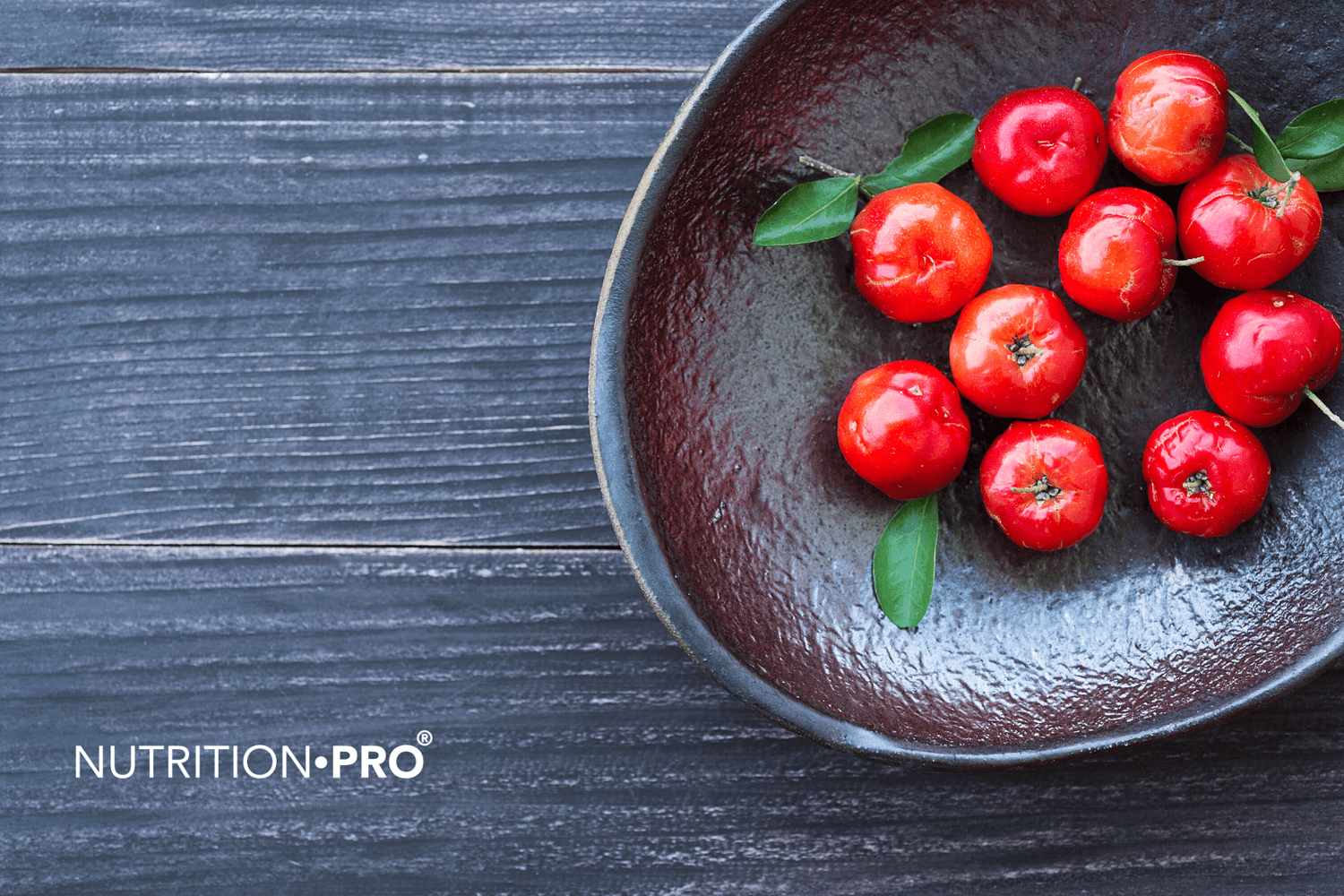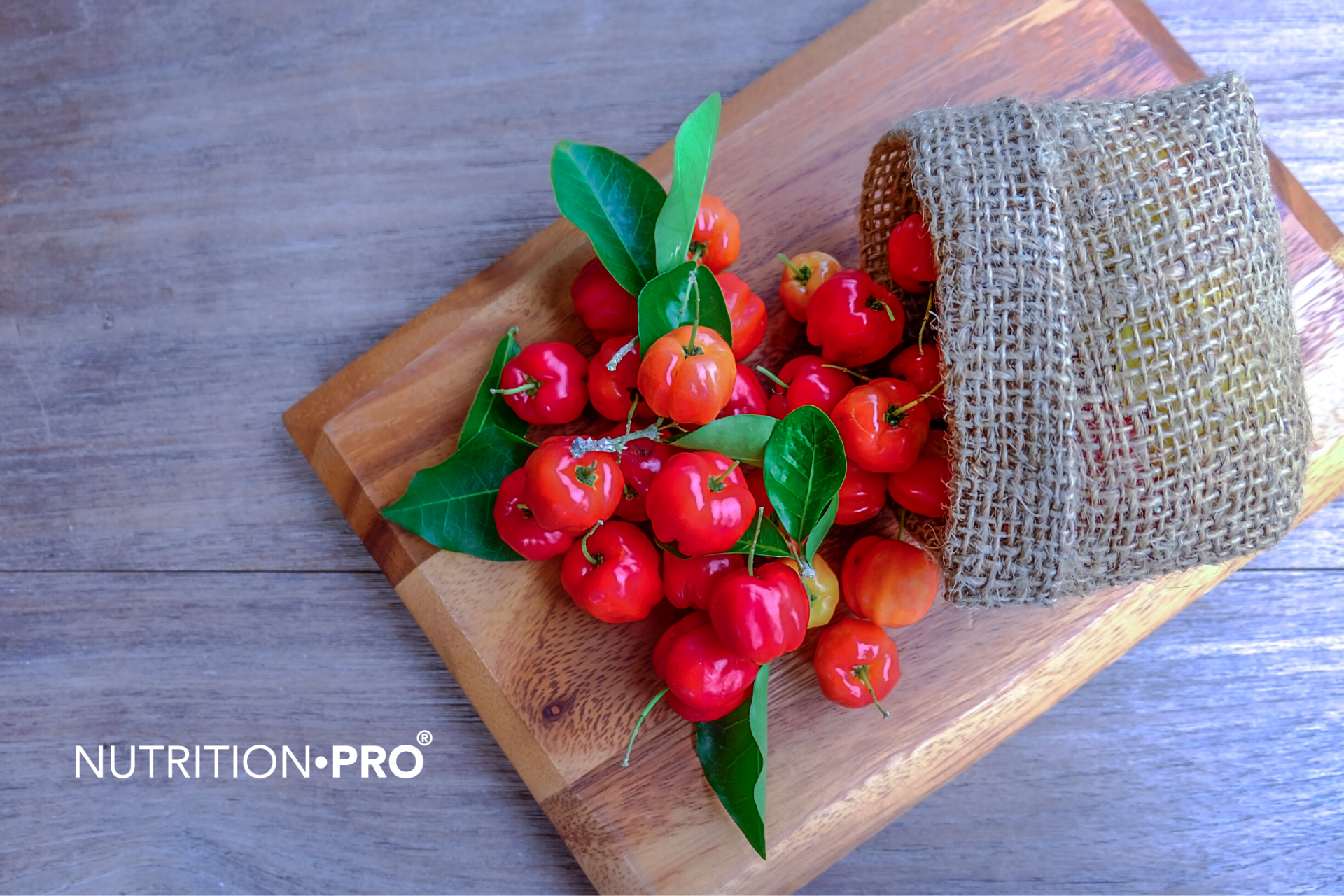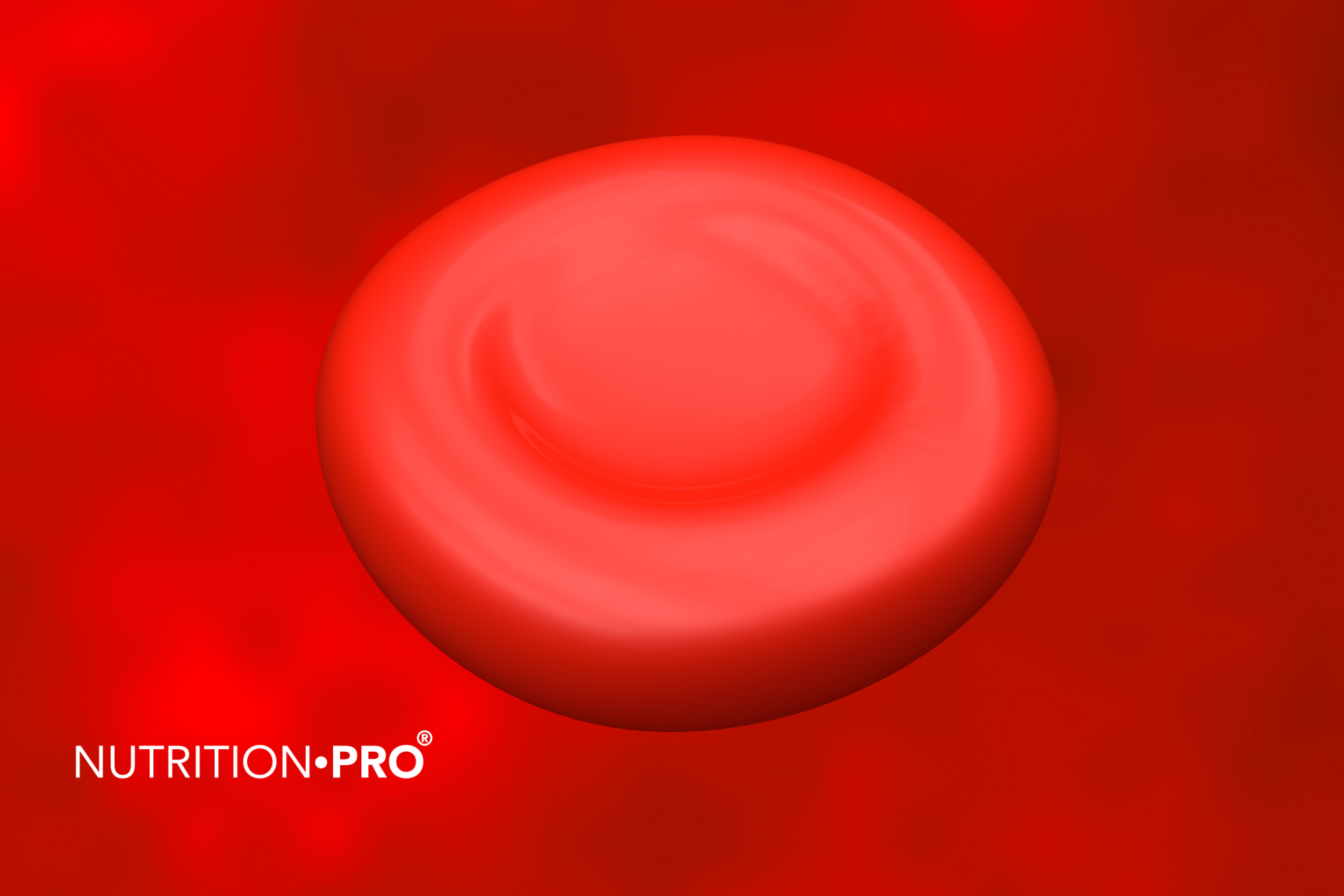Why take vitamin C?
Vitamin C is a water-soluble vitamin found in many foods, especially fruits and vegetables.
It is well known for increasing vitality , boosting immunity , being a powerful antioxidant , as well as having positive effects on skin health and immune function .
It is also vital for collagen synthesis, connective tissue, bones, teeth and your small blood vessels.
The human body can neither produce nor store vitamin C. It is therefore essential to consume it regularly in sufficient quantities.
The current daily value (DV) of vitamin C is 90 mg.
Deficiency symptoms include bleeding gums, frequent bruising and infections, poor wound healing, anemia and scurvy.
What are the best sources of vitamin C?
Here are the top 20 foods richest in vitamin C.
1. Cerola
This exotic superfruit is primarily known for its exceptional vitamin C content.
Just half a cup (49 grams) of red acerola cherries ( Malpighia emarginata ) provides 822 mg of vitamin C , or 913% of the DV!
Studies using acerola extract have shown it may have anti-cancer properties, help prevent UVB skin damage, and even reduce DNA damage caused by poor diet.

DISCOVER OUR ORGANIC ACEROLA POWDER IN CLICKING HERE
2. The Kakadu plum
Kakadu plum ( Terminalia ferdinandiana ) is an Australian native superfood with 100 times more vitamin C than oranges.
It has one of the highest known concentrations of vitamin C, containing up to 5,300 mg per 100 grams. A single plum contains 481 mg of vitamin C , or 530% of the DV.
It's also high in potassium, vitamin E, and the antioxidant lutein, which may benefit eye health .
3. Rosehip
Rosehip is a small, sweet and pungent fruit of the rosebush. It is packed with vitamin C.
About six rose hips provide 119 mg of vitamin C , or 132% of the DV
Vitamin C is necessary for collagen synthesis, which supports skin integrity as we age.
Studies have shown that vitamin C reduces sun damage to the skin, decreases wrinkles, dryness and discoloration, and improves its overall appearance. Vitamin C also helps with wound healing and inflammatory skin conditions like dermatitis.
4. Hot peppers
A green chili contains 109 mg of vitamin C , or 121% of the DV. In comparison, a red chili provides 65 mg, or 72% of the DV.
Additionally, chili peppers are rich in capsaicin, the compound responsible for their pungent taste. Capsaicin can also reduce pain and inflammation.
There is also some evidence that about a tablespoon (10 grams) of red chili powder can help increase fat burning .
5. Guava _
This pink-fleshed tropical fruit is native to Mexico and South America.
A single guava contains 126 mg of vitamin C , or 140% of the DV. It is particularly rich in the antioxidant lycopene.
A six-week study involving 45 healthy young people found that consuming 400 grams of peeled guava daily, or about 7 pieces of this fruit, significantly lowered their blood pressure and total cholesterol levels.
6. Sweet yellow peppers
The vitamin C content of sweet bell peppers or bell peppers increases as they ripen.
75 grams of yellow bell peppers provides 137 mg of vitamin C , or 152% of the DV, or double the amount found in green bell peppers.
Getting enough vitamin C is important for your eye health and can help protect against cataract progression.
A study of over 300 women found that those with higher vitamin C intakes had a 33% lower risk of cataract progression than those with the lowest intakes.
7. Blackcurrant
56 grams of blackcurrant ( Ribes nigrum ) contains 101 mg of vitamin C , or 112% of the DV.
Antioxidant flavonoids called anthocyanins give them their rich, dark color.
Studies have shown that diets high in antioxidants like vitamin C and anthocyanins can reduce oxidative damage associated with chronic diseases, including heart disease, cancer, and neurodegenerative diseases.
8. Thyme
Gram for gram, fresh thyme contains three times more vitamin C than oranges and one of the highest concentrations of vitamin C of any culinary herb .
28 grams of fresh thyme provides 45 mg of vitamin C , or 50% of the DV.
Simply sprinkling 1–2 tablespoons (3–6 grams) of fresh thyme over your meal adds 3.5–7 mg of vitamin C to your diet, which may boost your immunity and help fight infections.
While thyme is a popular remedy for sore throats and respiratory ailments, being also rich in vitamin C, it helps improve immune health, make antibodies, destroy viruses and bacteria, and eliminate cells infected.
9. Parsley
Two tablespoons (8 grams) of fresh parsley contain 10 mg of vitamin C , providing 11% of the recommended DV.
Along with other leafy greens, parsley is an important source of plant - derived non-heme iron .
Vitamin C increases the absorption of non-heme iron. This helps prevent and treat iron deficiency anemia.
A two-month study gave people on a vegetarian diet 500 mg of vitamin C twice daily with their meals. At the end of the study, their iron levels had increased by 17%, hemoglobin by 8% and ferritin, which is the stored form of iron, by 12%.
10. Spinach
A cup of raw chopped mustard spinach provides 195 mg of vitamin C , or 217% of the DV.
Even though the heat of cooking reduces the vitamin C content of foods, one cup of cooked mustard greens still provides 117 mg of vitamin C, or 130% of the DV.
Like many dark leafy green vegetables, mustard spinach is also high in vitamin A, potassium, calcium, manganese, fiber, and folate .
11. Kale
Kale is a cruciferous vegetable.
A cup of chopped raw kale provides 80 mg of vitamin C , or 89% of the DV. It also provides high amounts of vitamin K and the carotenoids lutein and zeaxanthin.
A cup of cooked kale provides 53 mg, or 59% of the DV for vitamin C.
While cooking this vegetable reduces its vitamin C content, one study found that boiled, fried, or steamed leafy greens help release more of their antioxidants. These powerful antioxidants can help reduce chronic inflammatory diseases.
12. The kiwi
A kiwi contains on average 71 mg of vitamin C , or 79% of the DV.
Studies have shown that vitamin C-rich kiwifruit can help reduce oxidative stress, lower cholesterol, and improve immunity.
A study in 30 healthy people between the ages of 20 and 51 found that eating 2 to 3 kiwifruit daily for 28 days reduced blood platelet adhesion by 18% and lowered triglycerides by 15%. It can reduce the risk of blood clots and stroke.
Another study in 14 men with vitamin C deficiency found that eating two kiwis a day for four weeks increased white blood cell activity by 20%. Vitamin C blood levels normalized after just one week, having increased by 304%.
13. Broccoli
Broccoli is a cruciferous vegetable. Half a cup of cooked broccoli provides 51 mg of vitamin C , or 57% of the DV.
Many observational studies have shown a possible association between high consumption of vitamin C-rich vegetables and decreased oxidative stress, improved immunity, and reduced risk of cancer and heart disease.
A randomized study gave 27 young men who were heavy smokers a 250 gram serving of steamed broccoli containing 146 mg of vitamin C each day. After ten days, their levels of the inflammatory marker C-reactive protein had decreased by 48%.
14. Brussels sprouts
Half a cup of cooked Brussels sprouts provides 49 mg, or 54% of the DV for vitamin C.
Like most cruciferous vegetables, Brussels sprouts are also high in fiber, vitamin K, folate, vitamin A, manganese, and potassium.
Both vitamins C and K are important for the health of your bones . In particular, vitamin C helps in the formation of collagen, which is the fibrous part of your bones.
A large 2018 review found that a high dietary intake of vitamin C was associated with a 26% reduced risk of hip fractures and a 33% reduced risk of osteoporosis.
15. Lemon
Lemons were given to sailors in the 1700s to prevent scurvy. A whole raw lemon, including its zest, provides 83 mg of vitamin C , or 92% of the DV.
Vitamin C in lemon juice also acts as an antioxidant.
When fruits and vegetables are cut, the polyphenol oxidase enzyme is exposed to oxygen. This triggers oxidation and browns the food. Applying lemon juice to exposed surfaces acts as a barrier, preventing the browning process.
16. Lychee
One lychee provides nearly 7 mg of vitamin C , or 7.5% of the DV, while a one-cup serving provides 151%.
Lychees also contain omega-3 and omega-6 fatty acids , which are good for your brain, heart, and blood vessels.
Studies specifically on lychee are not available. Nevertheless, this fruit provides plenty of vitamin C , which is known for its role in collagen synthesis and blood vessel health.
An observational study of 196,000 people found that people with the highest vitamin C intakes had a 42% reduced risk of stroke. Each additional serving of fruit or vegetables reduced the risk by an additional 17%.
17. The American Persimmon
Persimmons are an orange-colored fruit that looks like a tomato. There are many different varieties.
Although the Japanese persimmon is the most popular, the native American persimmon ( Diospyros virginiana ) contains almost nine times as much vitamin C.
One American persimmon contains 16.5 mg of vitamin C , or 18% of the DV.
18. Papaya
One cup (145 grams) of papaya provides 87 mg of vitamin C , or 97% of the DV.
Vitamin C also helps memory and has powerful anti-inflammatory effects in your brain.
In one study, 20 people with mild Alzheimer's disease were given a concentrated papaya extract for six months. The results showed a decrease in inflammation and a 40% reduction in oxidative stress.
19. Strawberry
One cup of strawberry halves (152 grams) provides 89 mg of vitamin C , or 99% of the DV.
Strawberries contain a diverse and potent blend of vitamin C, manganese, flavonoids, folate, and other beneficial antioxidants.
Studies have shown that due to their high antioxidant content, strawberries can help prevent cancer, vascular disease, dementia, and diabetes.
A study in 27 people with metabolic syndrome found that consuming freeze-dried strawberries daily – the equivalent of 3 fresh cups – reduced risk factors for heart disease.
At the end of the eight-week study, their levels of “bad” LDL cholesterol had fallen by 11%, while their levels of the blood vessel inflammation marker VCAM had fallen by 18%.
20. Orange
A medium-sized orange provides 70 mg of vitamin C , or 78% of the DV.
Widely consumed, oranges make up a significant portion of dietary vitamin C intake .
Other citrus fruits can also help you meet your vitamin C needs. For example, half a grapefruit contains 44 mg or 73% of the DV, a mandarin contains 24 mg or 39% of the DV and the juice of a lime 13 mg or 22% of the DV.
Conclusion
Vitamin C is vital for your immune system, healthy connective tissue and heart and blood vessels, among many other important roles.
Not consuming enough of this vitamin can have negative effects on your health.
While citrus fruits may be the most well-known source of vitamin C , a wide variety of fruits and vegetables are rich in this vitamin and may even exceed the amounts found in citrus fruits.
By eating some of the foods suggested above each day, your needs should be met.
A diet rich in vitamin C is an essential step towards good health and disease prevention.















